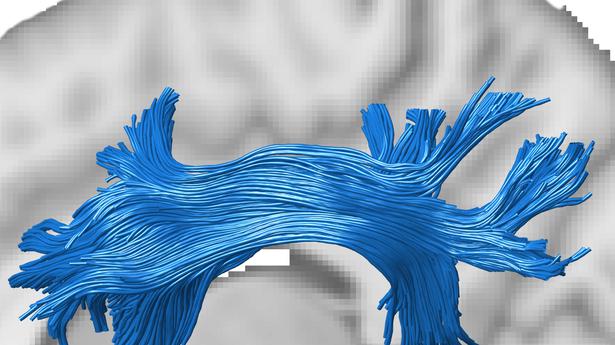
Researchers at IISc. develop algorithm to study connectivity in brain
The Hindu
Bengaluru Researchers at Indian Institute of Science (IISc.) have developed a new graphic processing
Researchers at Indian Institute of Science (IISc.) have developed a new graphic processing unit (GPU) based machine learning algorithm called Regularised, Accelerated, Linear Fascicle Evaluation (ReAl – LiFE), which will help to obtain a better understanding and in the prediction of connectivity between different regions of human brain.
This algorithm can help analyse extensive data generated from diffusion Magnetic Resonance Imaging (dMRI) scans which helps scientists study the connectivity in the brain at a speed, which is 150 times higher than a regular desktop computer or existing state-of-the-art algorithms. The study has been published in the journal Nature Computational Science.
With the study, researchers tried to study the wiring of different parts of the brain which helps in performing various computations.
While these patterns can be studied in animals through invasive techniques, in humans, dMRI is used to infer white matter patterns. Through it, scientists can track the movement of molecules to create a comprehensive map of connectome, which is a network of fibres across the brain.
“Even though it is difficult to pinpoint the connectomes, we are trying to infer information highway network by looking at traffic flow patterns (if molecules are like cars). We look at the movement of water molecules in the brain and we try to infer where the wires are. The water molecules have to travel along the length of the cables (axons), which have connected various parts of the brain. By measuring these lengths of water molecules, we are able to infer which areas are connected,” explained Devarajan Sridharan, Associate Professor at the Centre for Neuroscience (CNS), IISc., and corresponding author of the study.
He further added that this technique requires a lot of computation which can be carried out in an efficient manner through GPUs.
“Tasks that previously took hours to days can be completed within seconds to minutes,” he added.

KTM has reinforced its middleweight ADV portfolio in India with the introduction of two distinct offerings — the updated KTM 390 Adventure X and the globally-spec KTM 390 Adventure Enduro R. While the former caters to long-distance touring enthusiasts now seeking more value and tech, the latter is purpose-built for riders who demand uncompromised off-road performance, rooted in Dakar DNA.





















 Run 3 Space | Play Space Running Game
Run 3 Space | Play Space Running Game Traffic Jam 3D | Online Racing Game
Traffic Jam 3D | Online Racing Game Duck Hunt | Play Old Classic Game
Duck Hunt | Play Old Classic Game










